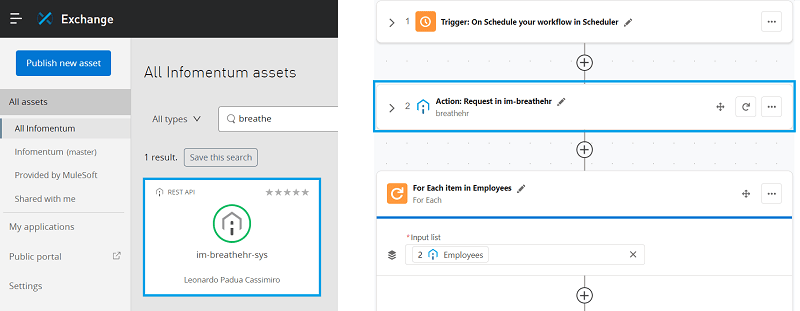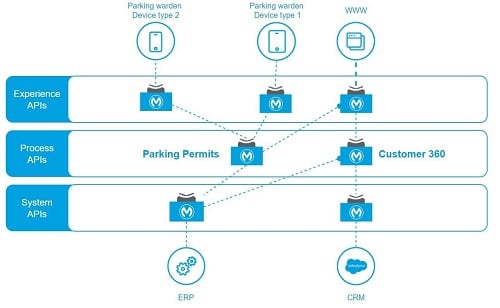As a project manager, I often have multiple projects running parallel to one another. Before building a solid approach to monitor all these tasks and activities in progress, I always worried I might miss something.
I aimed to build a dashboard that would be a source of information I could consult to identify where the next action is or where my intervention would be required. I already had the right tool in my hand and started creating my monitoring dashboard on Confluence.
Creating a Confluence dashboard is a powerful way to keep track of project statuses, key metrics and important information all in one central location. Here’s a step-by-step guide on how to do it, and my tips to creating an effective Confluence dashboard for managing multiple projects.
Settings
Step 1 - Set up a new page to host the dashboard
The first step is, of course, to create a Confluence page. The title can be something straightforward, like “Project Management Dashboard.”
Once the page is set, you need to decide on the key sections you want on your dashboard.
A few sections you might add :
- Projects in progress summary: Provides a high-level overview of all the projects you’re managing.
- Meeting notes: Grants easy access to the note of the latest meeting you attended.
- RAID: In project management, RAID stands for Risks, Assumptions, Issues and Dependencies. This section in your dashboard is essential to make sure you have all under control.
- Open tasks: List of individual or group actions to be monitored.
I personally organise my page by using the page layouts to four sections:
- Click twice on the layout icon in the WYSIWYG area on the top of the page
- → Four empty spaces will appear on your page.
- Enter the title of your sections in each space.

Now that the page is set, you can create all you dashboard components.
Step 2 - Build the project summary section
The project summary section is crucial for giving a quick snapshot of each project's status and other essential details. To create it, I utilise a confluence macro called Page Properties Report macro - a powerful tool that allows you to aggregate information from multiple Confluence pages into a single table on your dashboard. This macro is particularly useful for creating a centralised view of key project information across multiple projects. However, before we add the Page Properties Report to our dashboard, there are a few configuration steps to complete.
Automate the Projects Summary with Page Properties Report
To run the page properties report on your dashboard you need to:
- Have a dedicated Confluence page for each of your projects.
- Set up a Page Properties macro in each project page. Tag the project pages with a unique label.
- Finally configure the Page Properties macro to encapsulate key project details in a table on your dashboard.
Set Up Page Properties in each project page
- Navigate to the project page.
- Click “Edit” to modify the page.
- At the top of the page insert a Page Properties macro by typing /Page Properties and selecting it.
- Inside the Page Properties macro, create a table with two columns - one for the property name and one for the property value.
- Fill out the table with key project details. For example:
- Project Overview: Summary of all ongoing projects.
- Project Status: A line with a few details of the project’s current status. I tent to update this line regurly so that in my project dashboard shows me the latest on the project.
- Key Metrics and KPIs: Visual representations of project health.
- Upcoming Deadlines/Milestones: Important dates across all projects.
- Save the page.
- 💡 To make sure I can run the Page Properties Report easily on my dashboard, once the page is saved, I tag it with a label e.g. Project_notes

Repeat this process for each project page you want to appear in your report. Make sure that the structure of the Page Properties table is consistent across all pages.
Now that all the settings for the project pages are done, we can add the Page Properties Report macro in the progress summary section on the dashboard.
Configure the Page Properties Report macro on your dashboard
Navigate to your project dashboard, enter edit mode and in the “Projects Summary” section use the Page Properties Report Macro to pull in and display the page properties across all project pages. When the Page properties report is set it will automatically update when individual project pages are updated.
- Insert the Page Properties Report Macro by typing /Page Properties Report and edit it.
- In the window that pops up, configure the macro. Enter the label you associated to your project pages. The preview section will show you the page properties added to all the pages tagged with the label.
- Alternatively you can filter the pages by:
- Creator: Here you’ll need to enter the name of the user who originally created the page. With this configuration you’ll see only the pages the user created.
- Space(s): Specify the space where your project pages are located. If the projects are across multiple spaces, you can list them here.
- Once you are happy with the results returned click the Save button.

- The pop up will close, and on the dashboard you’ll see a list of pages with the link and details of your projects.

Step 3 - Build the meeting notes section
This section lists the pages with the latest meeting notes you recorded. It can be built in the same way that we build the Project summary section.
Set up Page Properties in each meeting notes page
- Create a Confluence page for each meeting.
- Add a Page Property macro to each page.
- Add a table with two columns - one for the property name and one for the property values.
- Fill out the table with key meeting details. For example:
- Date
- Participants
- Agenda.
- Save the page.
- Tag the page with the label e.g. meeting_notes.
💡 To facilitate this process, you can create a confluence template titled “Meeting Notes” so that all these settings will be populated automatically when you create a page using it.
Configure the Page Property Report macro on your dashboard
- Navigate to your project dashboard. In the “Meeting Notes” section use the Page Properties Report macro to pull in and display these properties across all meeting notes.
- Insert the Page Properties Report macro by typing /Page Properties Report and edit it.
- In the window that pops up, configure the macro. Enter the label you associated to your meeting notes pages. The preview section will return all the Page Properties of all the pages tagged with this label.
- Once you are happy with the results returned click the Save button.
- The pop up will close. On the page you’ll see the list with the link and the details of your meetings.

I particularly like this way of listing the meeting notes, as it displays the agenda points discussed during the most recent meetings. Some days are particularly busy and I attend many meetings, so having this type of report helps me browse the latest notes I've recorded.
RAID
Step 4 - Build the RAID log section
Creating a RAID log (Risks, Assumptions, Issues and Dependencies) is crucial to effectively manage and monitor key aspects of your project.
In this section I'll walk through the steps to create a RAID log in Confluence that integrates with Jira. This greatly enhances your project management dashboard by allowing you to track issues, risks and other elements directly from Jira within Confluence.
Here’s how you can set up my RAID log in Confluence:
First, ensure that you have appropriate Jira issues created for each RAID element:
- Risks: Create issues in Jira with a specific issue type or label for risks.
- Assumptions: Create issues or tasks that represent assumptions.
- Issues: Track project-related issues in Jira as standard issues.
- Dependencies: Use links or labels to track dependencies between Jira issues.
Add Jira Filters to Your RAID Log section in the Project Management Dashboard
You’ll add a Jira filter to pull in the relevant Jira issues.
- Add the Jira macro:
- In Confluence, type /Jira to insert the Jira macro.
- Configure the filter:
- Use JQL (Jira Query Language) to filter issues that represent risks.
- Example JQL: project in (PROJECT_NAME1, PROJECT_NAME2, PROJECT_NAME3) AND issuetype in (Risk, Assumption, Issue, Dependency)
- This query pulls in all issues types "Risk, Assumption, Issue, Dependency" type from the specified projects.
- Alternatively, if you want to list all the Jira issue your created you can use the JQL: Reporter = "Current user" AND issuetype in (Risk, Assumption, Issue, Dependency)
- This query pulls in all issues of the "Risk, assumption, Issue, Dependency" type from the specified reporter.
- Insert: Once you configure the filter, insert it into the RAID section of your page.

This setup will create a dynamic and integrated RAID log in Confluence, pulling directly from Jira. All relevant project elements are automatically tracked and updated, providing you with real-time information.
Open Task
Step 5 - Build the Open Tasks section
In Confluence, tasks are a great way to assign, track and manage action items across your team. These are actions coming directly from meetings or follow up activities. I particularly like to use Confluence tasks as it allows me to monitor all the actions my team needs to complete to progress with a project.
Tasks can be added to any Confluence page and then tracked collectively on your Project Management Dashboard.
- You can create tasks by typing [] (two square brackets) followed by your task description. Confluence will automatically convert this into a task checkbox.
- You can assign tasks to specific users directly in the task by typing @username after the task description. This assigns the task to that user, and they will receive a notification about the assigned task.
- Tasks can have due dates added by typing // followed by the date. This allows you to set deadlines for when the task should be completed.
Once created, the tasks can be tracked across pages using the Task Report macro, which aggregates tasks from different pages and spaces based on criteria like assignee, due date and status (open or completed).
Set up the macro:
In the Open Task section type /Task Report and select the Task Report macro from the dropdown list.
Once you've inserted the macro, you'll need to configure it to show only the open tasks based on:
- Assignee: Choose whose tasks you want to display.
- Space: Select the space you want to pull tasks from
- Page(s): Specify the page or pages to pull tasks from.
- Status: Filter tasks by status - Choose "Incomplete" to show only Open Tasks.
- Labels (optional): If your tasks are tagged with specific labels, you can filter them using labels.
Once you've configured the settings click "Insert" to add the macro to your page.
Conclusion
When you create a Project Management dashboard as outlined above, your content will be automatically updated and you’ll have easy access to the information you need to complete your work. With this dashboard the one thing you’ll focus on is monitoring it, and you’ll know where the next action lie.







